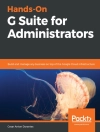Modern internet-enabled devices and fast communication technologies have ushered in a revolution in sharing of digital images and video. This may be for social reasons or for commercial and industrial applications, where the data is more likely to include sensitive personal or confidential information. In any event, the shared imagery is intended only for the end-user. Attackers can steal this data or manipulate it for their own uses, causing financial and emotional damage to the owners. Many applications generate important information in the form of images and video, where efficient security is critical. This drives the need for advanced security solutions and the need to continuously develop and maintain security measures in an ever-evolving battle against fraud and malicious intent.
There are various techniques employed in protecting digital media and information, such as digital watermarking, cryptography, stenography, data encryption, etc., In addition, sharing platforms and connected nodes themselves may be open to vulnerabilities and can suffer from security breaches. This book reviews present state-of-the-art research related to the security of digital imagery and video, including developments in machine learning applications. It is particularly suited for those that bridge the academic world and industry, and allows readers to understand the security concerns in the multimedia domain by reviewing present and evolving security solutions, their limitations, and future research directions.
Key Features
- Latest trends in the multimedia security domain
- Includes Machine Learning for multimedia security
- Insight to different security concerns (attacks)
- Reviews present challenges & future opportunities
- Potential & promising solution to the security concerns
İçerik tablosu
Preface
1 Blind Image Watermarking with Efficient Dual Restoration Feature
2 Secure, Robust and Imperceptible Image Watermarking Scheme Based On SFLCT
3 Content Watermarking and Data Hiding in Multimedia Security
4 Recent Advances in Reversible Watermarking in Encrypted Domain
5 A Review of Deep Steganography and Steganalysis
6 Recent Trends in Reversible Data Hiding Techniques
7 Anatomized Study of Security Solutions for Multimedia Deep Learning-Enabled Authentication, Cryptography and Information Hiding
8 New Lightweight Image Encryption Algorithm for The Internet of Things and Wireless Multimedia Sensor Networks
9 Applying the Capabilities of Machine Learning for Multimedia Security and Analysis
10 Assistive Communication Technology Options for Elderly Care
11 Deep Learning Approach for Scenario-Based Abnormality Detection
12 Ear Recognition for Multimedia Security
13 Secure Multimedia Management Currents Trends and Future Avenues
Yazar hakkında
Irshad Ahmad Ansari has been working at Department of Electronics and Communication Engineering, at PDPM Indian Institute of Information Technology, Design, and Manufacturing (IIITDM) Jabalpur, India since 2017. He received B.Tech degree in Electronics and Communication Engineering from Gautam Buddha Technical University, Lucknow, India in 2010, M.Tech. Degree in Control and Instrumentation from Dr B R Ambedkar National Institute of Technology Jalandhar, Punjab, India in 2012. He completed his Ph.D from IIT Roorkee with MHRD teaching assistantship and subsequently joined Gwangju Institute of Science and Technology, South Korea as a Postdoctoral fellow. His major research interest includes Image Processing, Signal Processing, Soft Computing, Brain-Computer Interface and Machine Learning. He is a Senior IEEE member. He has authored more than 32 research papers in various international journals and conferences. Varun Bajaj (Ph D, MIEEE 16 SMIEEE20) has been in the department of Electronics and Communication Engineering, at the Indian Institute of Information Technology, Design, and Manufacturing (IIITDM) Jabalpur, India since 2014. He worked as a visiting faculty in IIITDM Jabalpur from September 2013 to March 2014. He worked as Assistant Professor at the Department of Electronics and Instrumentation, Shri Vaishnav Institute of Technology and Science, Indore, India during 2009-2010. He received B.E. degree in Electronics and Communication Engineering from Rajiv Gandhi Technological University, Bhopal, India in 2006, M.Tech. Degree with Honors in Microelectronics and VLSI design from Shri Govindram Seksaria Institute of Technology & Science, Indore, India in 2009. He received his Ph.D. degree in the Discipline of Electrical Engineering, at the Indian Institute of Technology Indore, India in 2014. He is an Associate Editor of IEEE Sensor Journal and Subject Editor-in-Chief of IET Electronics Letters. He served as a Subject Editor of IET Electronics Letters from Nov -2018 to June 2020. He is Senior Member IEEE June 2020, MIEEE 16-20, and also contributing as an active technical reviewer of leading International journals of IEEE, IET, and Elsevier, etc. He has authored more than 110 research papers in various reputed international journals/conferences like IEEE Transactions, Elsevier, Springer, IOP etc. He has edited IOP books, and CRC Press (Taylor & Francis Group). The citation impact of his publications is around 2365 citations, h index of 24, and i10 index of 55 (Google Scholar Sep 2020). He is a recipient of various reputed national and international awards. His research interests include biomedical signal processing, image processing, time-frequency analysis, and computer-aided medical diagnosis.












